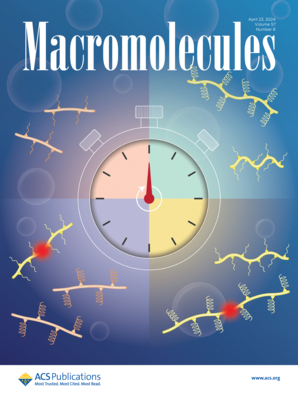Renewable Lactam Monomer for Tunable and Processable Polyamides
IF 5.1
1区 化学
Q1 POLYMER SCIENCE
引用次数: 0
Abstract
Replacement of petroleum-derived monomers with renewable alternatives is an integral part of the sustainable polymer framework. Research in this area involves the search for bio-based or recycled starting materials for traditional polymers, as well as investigations into new materials accessible from renewable feedstocks. Focusing on the latter, we studied the properties of polyamides synthesized from γ-methyl-ε-caprolactam through anionic ring-opening polymerization by an activated monomer mechanism. The amorphous homopolymer presents high stiffness (Young’s modulus, ≈3 GPa), strength (stress at break, ≈80 MPa) and toughness under dry (low humidity) conditions, high ductility (strain at break, ≈1100%) in humid environments, optical clarity, and excellent processability due to its non-crystallizable nature and solubility in common organic solvents. Copolymerization with ε-caprolactam allows tailoring the mechanical properties and crystallinity in the resultant copolymers and provides new opportunities for advanced manufacturing and other applications.

用于可调节和可加工聚酰胺的可再生内酰胺单体
用可再生替代品取代石油衍生单体是可持续聚合物框架不可分割的一部分。该领域的研究包括为传统聚合物寻找生物基或回收起始材料,以及研究可从可再生原料中获得的新材料。针对后者,我们研究了通过阴离子开环聚合法以活化单体机制合成的 γ-甲基-ε-己内酰胺聚酰胺的特性。这种无定形均聚物在干燥(低湿度)条件下具有较高的硬度(杨氏模量,≈3 GPa)、强度(断裂应力,≈80 MPa)和韧性,在潮湿环境中具有较高的延展性(断裂应变,≈1100%)、光学清晰度,而且由于其不结晶的特性和在普通有机溶剂中的溶解性,具有极佳的加工性能。与ε-己内酰胺共聚可定制共聚物的机械性能和结晶度,为先进制造和其他应用提供了新的机遇。
本文章由计算机程序翻译,如有差异,请以英文原文为准。
求助全文
约1分钟内获得全文
求助全文
来源期刊

Macromolecules
工程技术-高分子科学
CiteScore
9.30
自引率
16.40%
发文量
942
审稿时长
2 months
期刊介绍:
Macromolecules publishes original, fundamental, and impactful research on all aspects of polymer science. Topics of interest include synthesis (e.g., controlled polymerizations, polymerization catalysis, post polymerization modification, new monomer structures and polymer architectures, and polymerization mechanisms/kinetics analysis); phase behavior, thermodynamics, dynamic, and ordering/disordering phenomena (e.g., self-assembly, gelation, crystallization, solution/melt/solid-state characteristics); structure and properties (e.g., mechanical and rheological properties, surface/interfacial characteristics, electronic and transport properties); new state of the art characterization (e.g., spectroscopy, scattering, microscopy, rheology), simulation (e.g., Monte Carlo, molecular dynamics, multi-scale/coarse-grained modeling), and theoretical methods. Renewable/sustainable polymers, polymer networks, responsive polymers, electro-, magneto- and opto-active macromolecules, inorganic polymers, charge-transporting polymers (ion-containing, semiconducting, and conducting), nanostructured polymers, and polymer composites are also of interest. Typical papers published in Macromolecules showcase important and innovative concepts, experimental methods/observations, and theoretical/computational approaches that demonstrate a fundamental advance in the understanding of polymers.
 求助内容:
求助内容: 应助结果提醒方式:
应助结果提醒方式:


